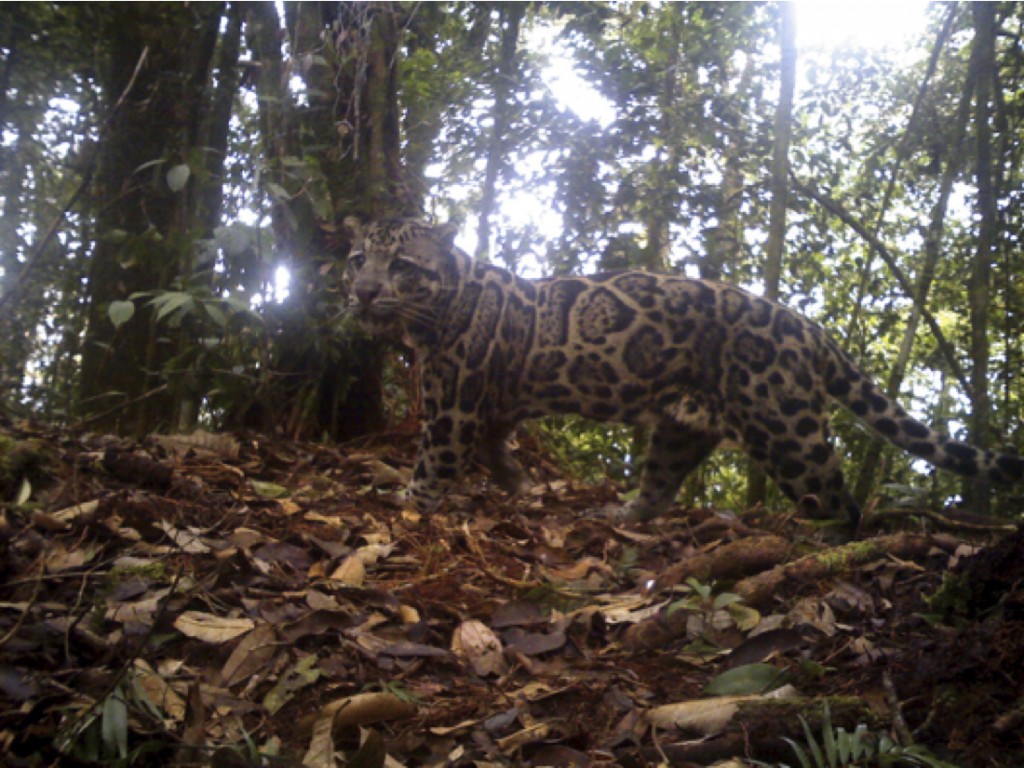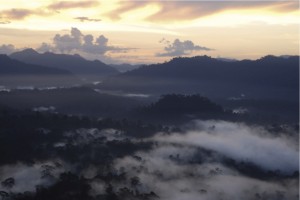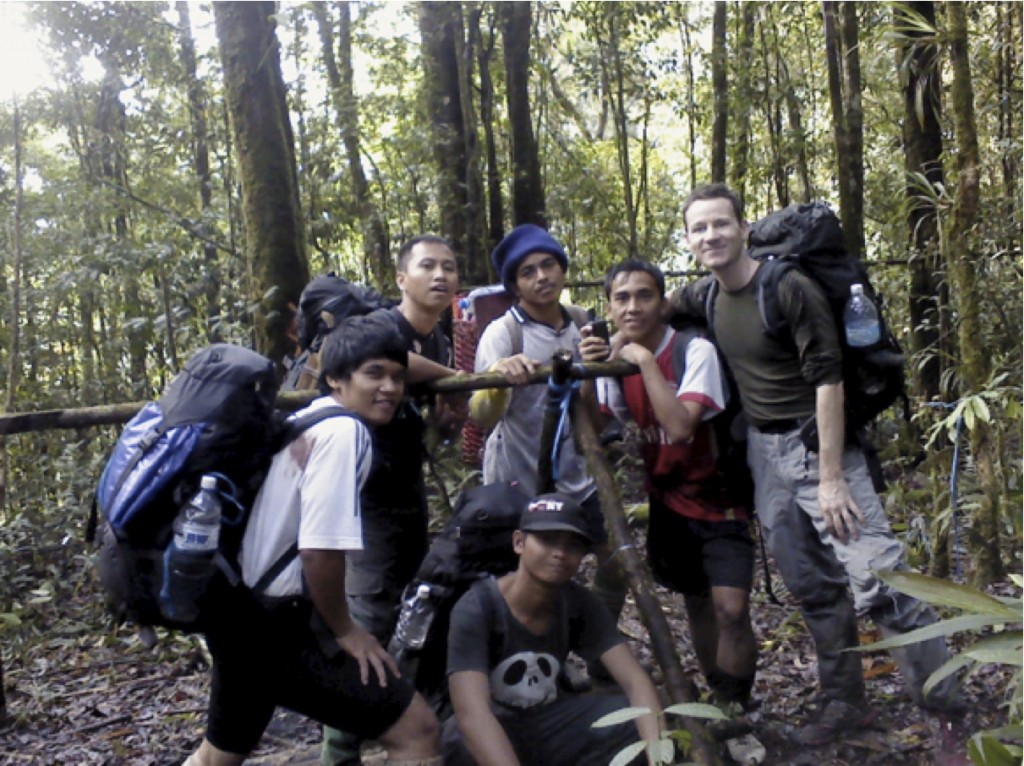The WildCRU project modelled the potential of clouded leopards as umbrella species for the conservation of other mammals across their range, and carried out camera trapping surveys at two sites in Borneo, as part of a larger study aiming to use such information to guide carbon trading mechanisms to conserve SE Asian forest biodiversity.
 The Woodspring Trust made a significant contribution to the Wildlife Conservation Research Unit by supporting their clouded leopard programme in South East Asia. This Sunda clouded leopard is from their field site in Sabah, Bornean Malaysia, captured on camera traps at over 1400 m altitude, in the Crocker Range National Park. Previous studies had suggested that these felids do not use forest above 1300m in Borneo. © Andrew Hearn/ WildCRU.
The Woodspring Trust made a significant contribution to the Wildlife Conservation Research Unit by supporting their clouded leopard programme in South East Asia. This Sunda clouded leopard is from their field site in Sabah, Bornean Malaysia, captured on camera traps at over 1400 m altitude, in the Crocker Range National Park. Previous studies had suggested that these felids do not use forest above 1300m in Borneo. © Andrew Hearn/ WildCRU.
 Sunrise across a selectively logged Dipterocarp forest in Sabah. The team’s findings suggest that these modified landscapes are important habitats for the conservation of Bornean felids. © Andrew Hearn
Sunrise across a selectively logged Dipterocarp forest in Sabah. The team’s findings suggest that these modified landscapes are important habitats for the conservation of Bornean felids. © Andrew Hearn
 A key component of the team’s work in Sabah is the raising of local capacity. During their survey of Crocker Range 3 extra local villagers – Nuh Engoh, Rizam Bin Bakiri and Yakub Sadiri – were employed as field assistants and trained in the basics of camera trapping. Nuh and Rizam now remain employed on the project at the subsequent survey areas. Training was also provided to Sabah Parks staff, who also carry out monitoring programmes using camera traps in some areas. Deploying cameras traps over more than 160 km2 often requires field teams to camp in the forest © Andrew Hearn. From left to right, Gilmoore Bolongon, Rizam Bin Bakiri, Nuh Engoh, Andrew Hearn – WildCRU’s DPhil student (back row) Onassis Unabia and Jasmi Joroh (front row).
A key component of the team’s work in Sabah is the raising of local capacity. During their survey of Crocker Range 3 extra local villagers – Nuh Engoh, Rizam Bin Bakiri and Yakub Sadiri – were employed as field assistants and trained in the basics of camera trapping. Nuh and Rizam now remain employed on the project at the subsequent survey areas. Training was also provided to Sabah Parks staff, who also carry out monitoring programmes using camera traps in some areas. Deploying cameras traps over more than 160 km2 often requires field teams to camp in the forest © Andrew Hearn. From left to right, Gilmoore Bolongon, Rizam Bin Bakiri, Nuh Engoh, Andrew Hearn – WildCRU’s DPhil student (back row) Onassis Unabia and Jasmi Joroh (front row).

